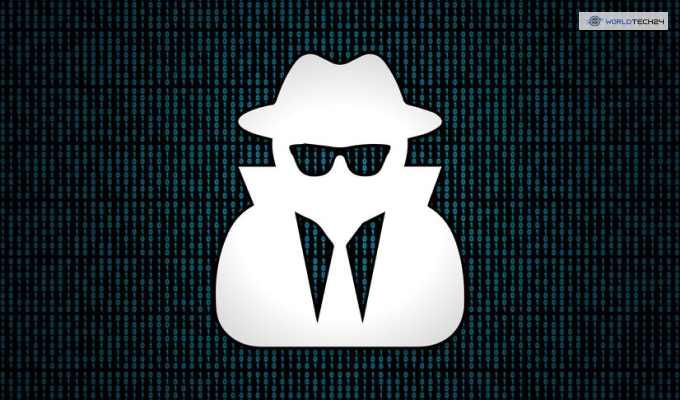In the digital age, hacking has become a ubiquitous term, often associated with nefarious activities aimed at breaching security systems and compromising data. However, hacking is a multifaceted concept that encompasses a wide range of activities, not all of which are malicious.
Ethical hacking has emerged as a crucial practice for identifying vulnerabilities in systems and strengthening cybersecurity measures. This article delves into the intricacies of hacking, exploring its definitions, techniques, and ethical considerations.
Defining Hacking

Hacking is commonly defined as the unauthorized access, manipulation, or exploitation of computer systems or networks. However, this definition fails to capture the nuances of hacking as a practice.
At its core, hacking is about exploring the limitations and possibilities of technology, often in unconventional ways. Ethical hacking, also known as penetration testing or white hat hacking, involves the authorized attempt to bypass security defenses to identify vulnerabilities that malicious actors could exploit.
Understanding Ethical Hacking

Ethical hacking is conducted with the consent of the system owner, typically as part of a comprehensive security assessment. The primary objective is to uncover weaknesses in the system’s defenses before attackers can exploit them. Ethical hackers employ a variety of techniques to simulate real-world cyber attacks, including:
Scanning and Enumeration
Ethical hackers use automated tools to scan networks for vulnerabilities such as open ports, misconfigured services, and outdated software. Enumeration involves gathering information about network resources, such as user accounts and system configurations, to identify potential entry points.
Vulnerability Assessment
Once potential vulnerabilities are identified, ethical hackers conduct a thorough assessment to determine their severity and exploitability. This may involve manually probing systems for weaknesses or using specialized software to exploit known vulnerabilities.
Social engineering tactics, such as phishing emails and pretexting, are often used by ethical hackers to test the human element of security. By tricking users into divulging sensitive information or performing unauthorized actions, ethical hackers can assess the effectiveness of organizational security policies and procedures.
Exploitation
In some cases, ethical hackers may exploit vulnerabilities to demonstrate their impact and provide recommendations for remediation. This could involve gaining unauthorized access to systems, escalating privileges, or executing arbitrary code.
Post-Exploitation
After gaining access to a system, ethical hackers thoroughly document their findings and potential pathways for further exploitation. This information is critical for understanding the full scope of a security breach and developing effective countermeasures.
Ethical Considerations in Hacking

While ethical hacking serves a valuable purpose in bolstering cybersecurity defenses, it is not without its ethical considerations. Several key principles guide ethical hacking practices:
Informed Consent
Ethical hackers must obtain explicit permission from the system owner before conducting any penetration testing activities. This ensures that all parties are aware of the scope and potential impact of the assessment.
Minimization of Harm
Ethical hackers must exercise caution to minimize the risk of disrupting or damaging systems during testing. This may involve limiting the scope of testing to non-production environments or obtaining explicit approval for potentially disruptive actions.
Confidentiality
Ethical hackers are bound by strict confidentiality agreements to protect sensitive information obtained during testing. This includes any data or credentials discovered during the assessment and the methodologies used to exploit vulnerabilities.
Integrity
Ethical hackers must maintain the integrity of the systems they test by refraining from making unauthorized modifications or accessing information beyond the scope of the assessment. Any changes made during testing should be reversible and clearly documented.
Disclosure of Findings
Once testing is complete, ethical hackers are responsible for providing detailed reports of their findings to the system owner. This includes a comprehensive analysis of vulnerabilities discovered, along with recommendations for remediation.
Legal and Regulatory Framework
In addition to ethical considerations, ethical hackers must also navigate a complex legal and regulatory landscape. Many countries have laws governing unauthorized access to computer systems and networks, which can vary significantly in scope and severity.
Ethical hackers must ensure compliance with relevant legislation, such as the Computer Fraud and Abuse Act (CFAA) in the United States while performing penetration testing activities.
What Are The Different Types Of Hacking?

Hacking can be categorized into various types based on the intent, techniques, and targets involved. Here are some of the most common types of hacking:
Ethical Hacking (White Hat Hacking)
Ethical hacking involves authorized attempts to bypass security defenses to identify vulnerabilities in systems and networks. Ethical hackers, also known as white-hat hackers, use their skills to improve cybersecurity measures and protect against malicious attacks.
Malicious Hacking (Black Hat Hacking)
Malicious hacking refers to unauthorized attempts to gain access to computer systems or networks for nefarious purposes. Black-hat hackers exploit vulnerabilities for personal gain, such as stealing sensitive information, disrupting services, or causing financial harm.
Gray Hat Hacking
Gray-hat hackers operate in a morally ambiguous space between ethical and malicious hacking. They may uncover vulnerabilities without authorization but choose to disclose them publicly or to the system owner for recognition or compensation.
Script Kiddie Hacking
Script kiddies are individuals with limited technical skills who use pre-existing tools and scripts to launch simple attacks. While they may not possess in-depth knowledge of hacking techniques, they can still cause damage through their activities.
State Sponsored Hacking
State-sponsored hacking involves government agencies or military organizations conducting cyber attacks for political, economic, or espionage purposes. These attacks often target critical infrastructure, government systems, or foreign entities to gather intelligence or disrupt operations.
Hacktivism
Hacktivism combines hacking with political or social activism to promote a specific cause or agenda. Hacktivists may target government websites, corporate databases, or other high-profile entities to protest policies, raise awareness, or expose wrongdoing.
Phishing
Phishing is a form of social engineering where attackers use fraudulent emails, websites, or messages to trick individuals into divulging sensitive information, such as login credentials or financial details. Phishing attacks can be highly effective and are often used to steal personal information or distribute malware.
SQL Injection
SQL injection is a technique used to exploit vulnerabilities in web applications that interact with databases. Attackers inject malicious SQL code into input fields to manipulate database queries and gain unauthorized access to sensitive information or execute arbitrary commands.
DDoS Attacks
Distributed Denial of Service (DDoS) attacks involve flooding a target system or network with a large volume of traffic, rendering it unavailable to legitimate users. DDoS attacks can disrupt services, cause financial losses, and damage reputations.
Man-in-the-Middle (MitM) Attacks
MitM attacks occur when an attacker intercepts and modifies communication between two parties without their knowledge. By positioning themselves between the sender and receiver, attackers can eavesdrop on sensitive information, manipulate data, or impersonate legitimate users.
Ransomware Attacks
Ransomware is a type of malware that encrypts files or locks down systems, preventing users from accessing their data until a ransom is paid. Ransomware attacks can have devastating consequences for individuals and organizations, resulting in data loss, financial extortion, and reputational damage.
IoT Hacking
With the proliferation of Internet of Things (IoT) devices, hackers are increasingly targeting connected devices such as smart TVs, cameras, and thermostats. IoT hacking can involve exploiting vulnerabilities to gain unauthorized access, hijack devices for botnet attacks, or steal sensitive information.
These are just a few examples of the diverse landscape of hacking activities. As technology evolves and new vulnerabilities emerge, hackers continue to develop innovative techniques to exploit systems and networks for various purposes.
Therefore, it is essential for individuals and organizations to stay vigilant and implement robust cybersecurity measures to mitigate the risks posed by hacking threats.
Wrapping Up!
Ethical hacking plays a crucial role in safeguarding digital assets and protecting against cyber threats. By simulating real-world attacks and identifying vulnerabilities before they can be exploited, ethical hackers help organizations strengthen their security posture and mitigate risk.
However, ethical hacking is not without its ethical and legal challenges. Practitioners must adhere to strict principles of informed consent, minimize harm, maintain confidentiality, uphold integrity, and disclose findings responsibly. By following these guidelines, ethical hackers can effectively contribute to the ongoing effort to secure cyberspace for all users
Read More…
Unveiling Website Hacking: Methods, Implications, and Defense Strategies
Getting To Grips With The Benefits Of Penetration Testing
Why Do You Need A Proper Security Officer Management System?
Don’t Let You Data Leak. Upgrade Your Mac’s Cybersecurity









